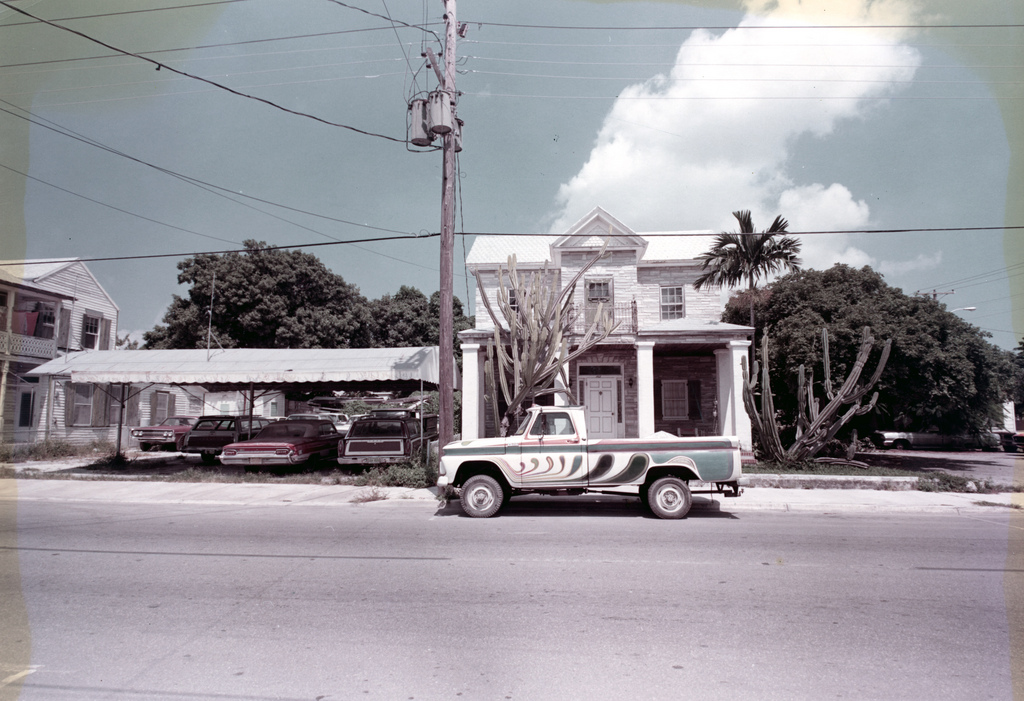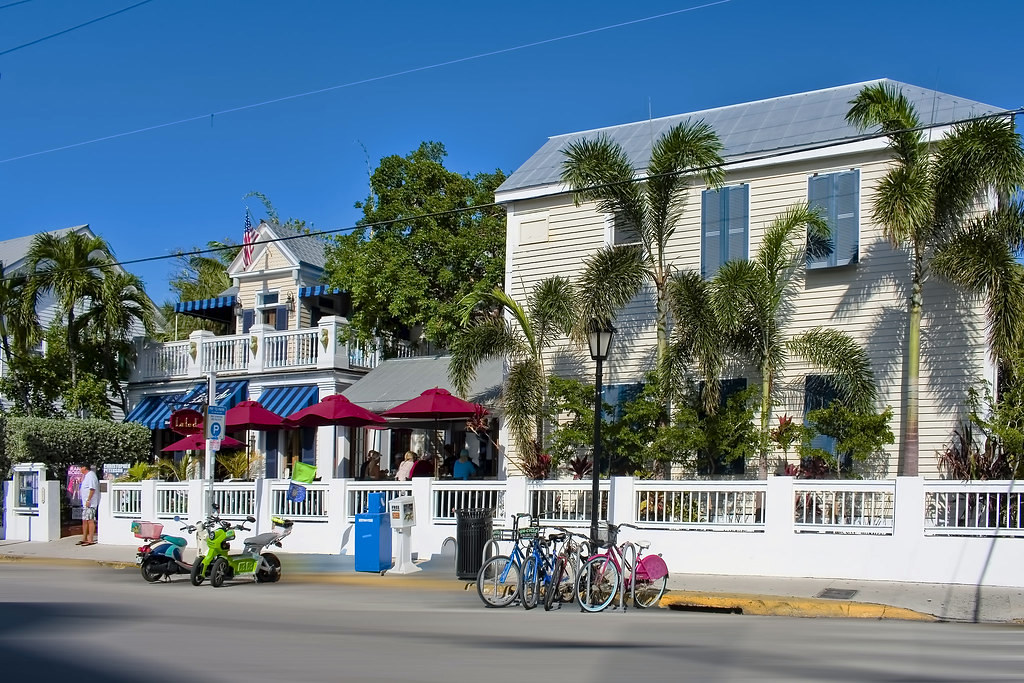
The photo above shows Jose Marti speaking from the balcony at 1125 Duval Street in 1883 urging Cuban independence from Spanish domination. The house became celebrated and
referred to at La Terreza de Marti. The original house still stands
today but has been altered several times over the years.

The above photo taken in 1960 shows the second floor porch roof and balusters were removed. A 1950's era wrought iron railing replaced the porch. Several large columns replaced the original first floor turned wood columns shown in the 1883 photo. The original wood siding was covered with Indian Block - a
man-made cement siding manufactured in Key West which many locals used to
"modernize" their homes in the 1950s and 1960s. By the 1960s most of the vestiges of the original house had been removed.
1965
1973
I found the two above photos of 1125 Duval Street in my old shoebox. Both were taken in 1965. I also found the photo from 1973 taken by Ed Swift (Historic Tours of America). The 1973 photo shows the property around the time Key West was being discovered by gays and and particularly by Larry Formica. The Monroe County Clerk of Court records show that Formica purchased 1125 Duval Street for $101,000 on October 1, 1978. He also purchased the vacant
lot to the south as well as 509 Catherine, 511 Catherine, and 513
Catherine Street shown below.



All of the buildings were renovated and a new two story building was constructed on the corner of Duval and Catherine Streets. The 1912 historic Sanborn Fire Map showed a large cistern located behind 1125 Duval Street where Formica constructed a pool surrounded by lush vegetation. The ramshackle assemblage was turned into a boutique gay hotel named LaTeDa which had two restaurants and bars. It became one of the main attractions for gay visitors to the island as well as a watering hole and dining venue for locals of all persuasions.
A series of decks connected 1125 Duval with the new building to the south where there used to be a car lot. The rear building at 513 Catherine Street was renovated. It became the kitchen and a guest room. 511 Catherine was substantially renovated and expanded - it originally was one story. It became two story plus a large room was added. A series of interconnecting stairways and walkways led to the rooftop sundeck called "Nosebleed".
I spent the second week of my first trip to Key West in the second floor
front guest room in 1985. This was the same room from whence Jose Marti
emerged a hundred plus years earlier to give his famous Cuba Libre speech. The
guest room back then was a plain old bedroom with 50s era bathroom. The hotel was like no place I had stayed before. The day we arrived we left our bags
at the reception desk and had lunch poolside. I sat in amazement when a
woman sitting at the table next to us stood up removed her sarong, and
stepped into the pool - naked. She swam to the other end and returned.
She emerged from the pool, wrapped the sarong around her body, and sat
back down at the table. Over the years I saw others swim nude in that pool but never saw a restaurant patron do a dip like that again.
The first floor restaurant was noted for its decor including pink table cloth and napkin, white bud base with pink carnation, white china ash tray with a small pack of LaTeDa cigarettes and matches, water and wine glasses. Music always played creating a party atmosphere. The first floor restaurant served three meals each day with memorable dishes often served by very slow moving and sometimes forgetful waiters.
 |
Larry Formica
|
There was a bar right off guest registration in the front of the
building, another bar located midway to the rear, and a third bar on the second floor. A fourth bar would pop up on Nosebleed during tea dances on Wednesday and Sunday afternoon from 5:00 to
7:00 PM when the music would stop and the bars would close. Patrons would walk a couple of block to the Atlantic Shores Resort for Tea by the Sea. The LaTeDa restaurants would open and serve dinner shortly after the guests left the premises.
Here are two Trivia Questions
First: What was the name of the Asian restaurant on the second floor which burned up?
Second: What was the name of the new restaurant that replaced it? The photo above shows the replacement which is now the cabaret and piano bar.
2008 Note the Indian Block siding was removed and replaced by wood siding. The first floor porches were enclosed. The second floor balcony was restored.
2010
2013
2015
Current Day
















































